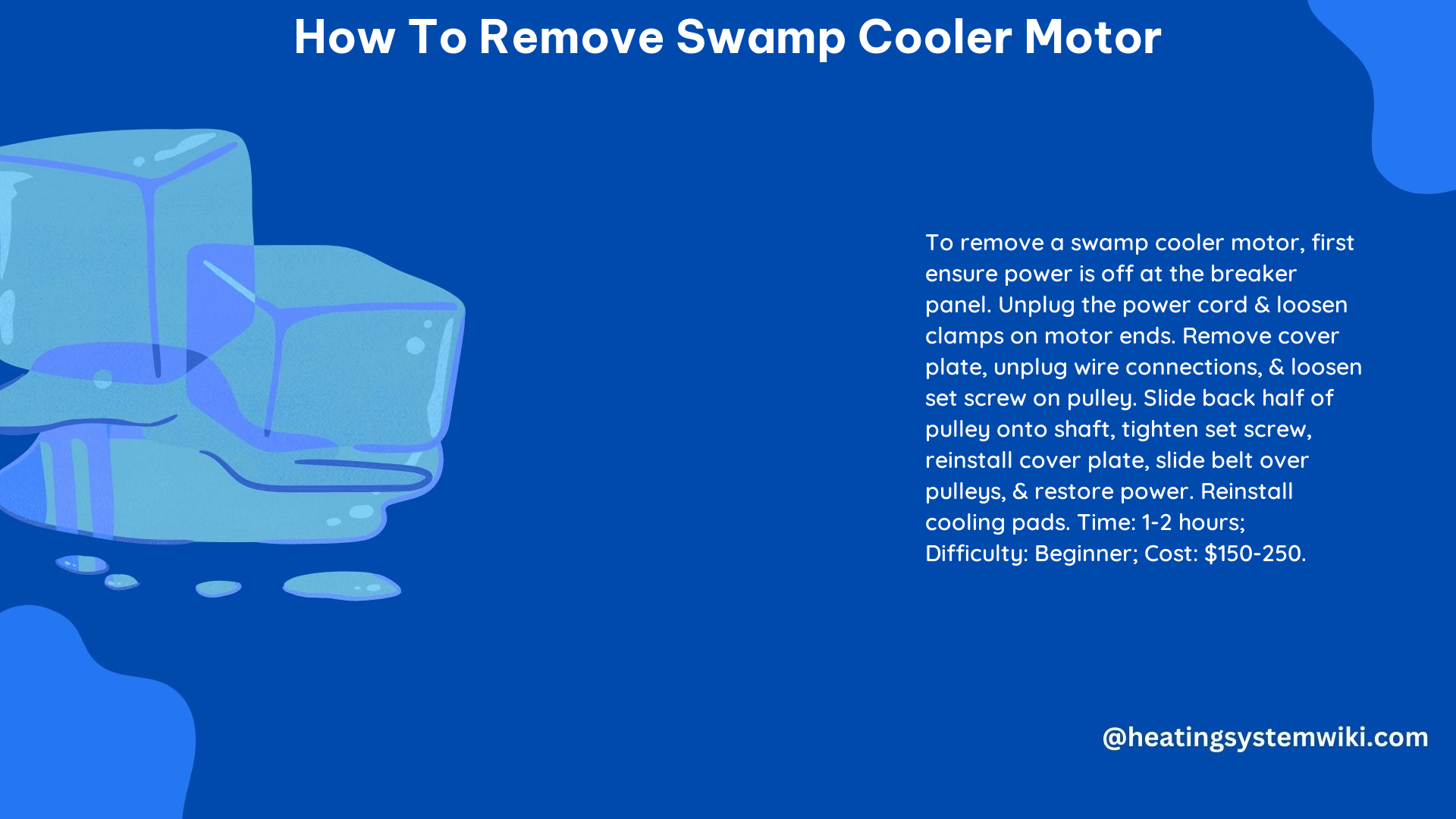Removing a swamp cooler motor can be a straightforward task, but it requires a methodical approach to ensure the process is carried out safely and effectively. This comprehensive guide will walk you through the step-by-step process of removing a swamp cooler motor, providing you with the technical specifications, unique perspectives, and references to help you tackle this project with confidence.
Disconnecting the Power
Before you begin, it’s crucial to ensure the power to the swamp cooler is turned off at the breaker panel. This step is essential for your safety, as working with electrical components while the power is still on can be extremely dangerous. Once the power is disconnected, unplug the power cord to the motor to further isolate the system.
Removing the Cover Plate

Using a screwdriver, locate the two screws that secure the cover plate to the swamp cooler. Carefully loosen and remove these screws, taking note of their size and position for later reassembly. Additionally, locate and loosen the screw that grounds the cover plate to the system.
Unplugging the Wire Connections
With the cover plate removed, you’ll have access to the motor’s wire connections. Carefully disconnect each wire, labeling them or taking a photograph to ensure proper reconnection during the reassembly process. Be mindful of the wire colors and their corresponding terminals to avoid any wiring errors.
Loosening the Set Screw on the Pulley
The pulley is the component that transfers the motor’s rotational force to the fan blades. To remove the motor, you’ll need to loosen the set screw that secures the pulley to the motor shaft. Use a wrench to gently loosen the set screw, taking care not to damage the threads. Once loosened, slide the back half of the pulley onto the shaft and tighten the set screw onto the flat spot.
Sliding the Motor Out
With the power disconnected, the cover plate removed, the wire connections unplugged, and the pulley loosened, you can now carefully slide the motor out of its position. Be mindful of any connected components, such as the fan blades or the motor mount, and avoid damaging them during the removal process.
Technical Specifications
The time required to remove a swamp cooler motor can range from 1 to 2 hours, depending on your experience and the complexity of the unit. The process is considered beginner-friendly, and the tools required are relatively simple, including a screwdriver, wrench, and possibly a torch for rust removal.
It’s important to note that the specific dimensions and specifications of the swamp cooler motor may vary depending on the manufacturer and model. Typical swamp cooler motors range from 1/4 to 1/2 horsepower, with voltages ranging from 115 to 230 volts. The motor shaft diameter can vary from 1/2 to 3/4 inches, and the pulley size may range from 4 to 8 inches in diameter.
Unique Perspective
When dealing with a seized motor, it’s essential to use penetrating oil and allow it sufficient time to seep through the bushing. This can help loosen the motor and facilitate its removal. If the motor is grounded or the rotor is seized to the stator, it’s often more cost-effective to replace the entire motor rather than attempting to repair it.
Additionally, it’s crucial to inspect the motor’s bearings and windings for any signs of wear or damage. If the bearings are worn or the windings are damaged, it may be necessary to replace the entire motor rather than just the faulty components.
References
- How to Replace a Swamp Cooler Motor
- Swamp Cooler Motor Replacement
- Swamp Cooler Fan Motor Replacement
- Disassembling Swamp Cooler Fan/Motor
- How to Replace a Swamp Cooler Motor
By following the detailed steps outlined in this guide, you’ll be able to successfully remove your swamp cooler motor and prepare for any necessary repairs or replacements. Remember to always prioritize safety, take your time, and refer to the technical specifications and unique perspectives provided to ensure a smooth and efficient removal process.
